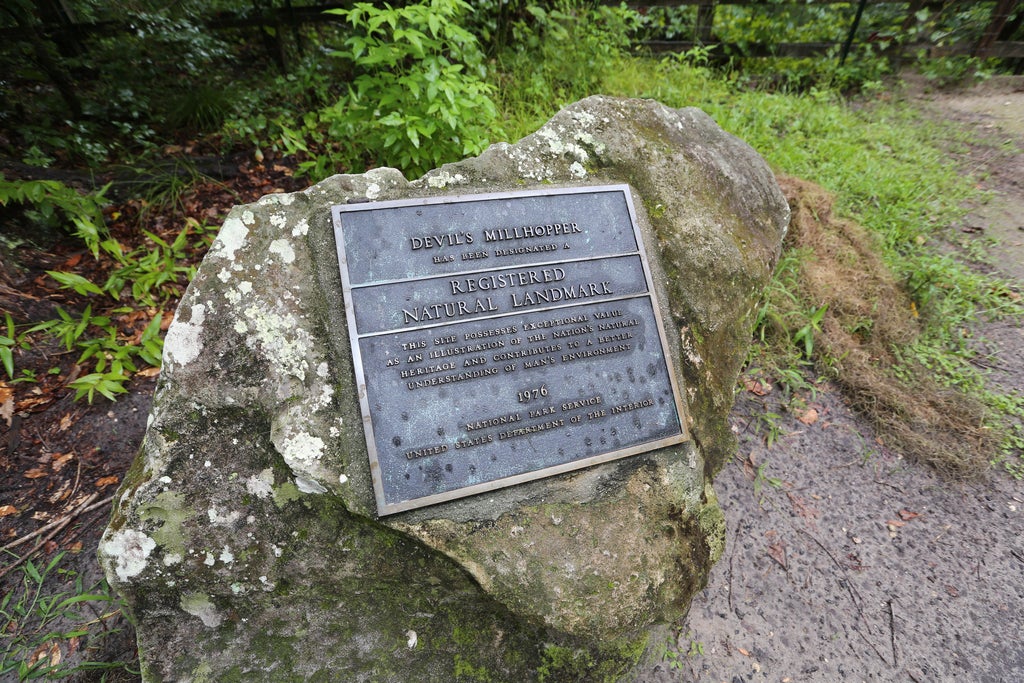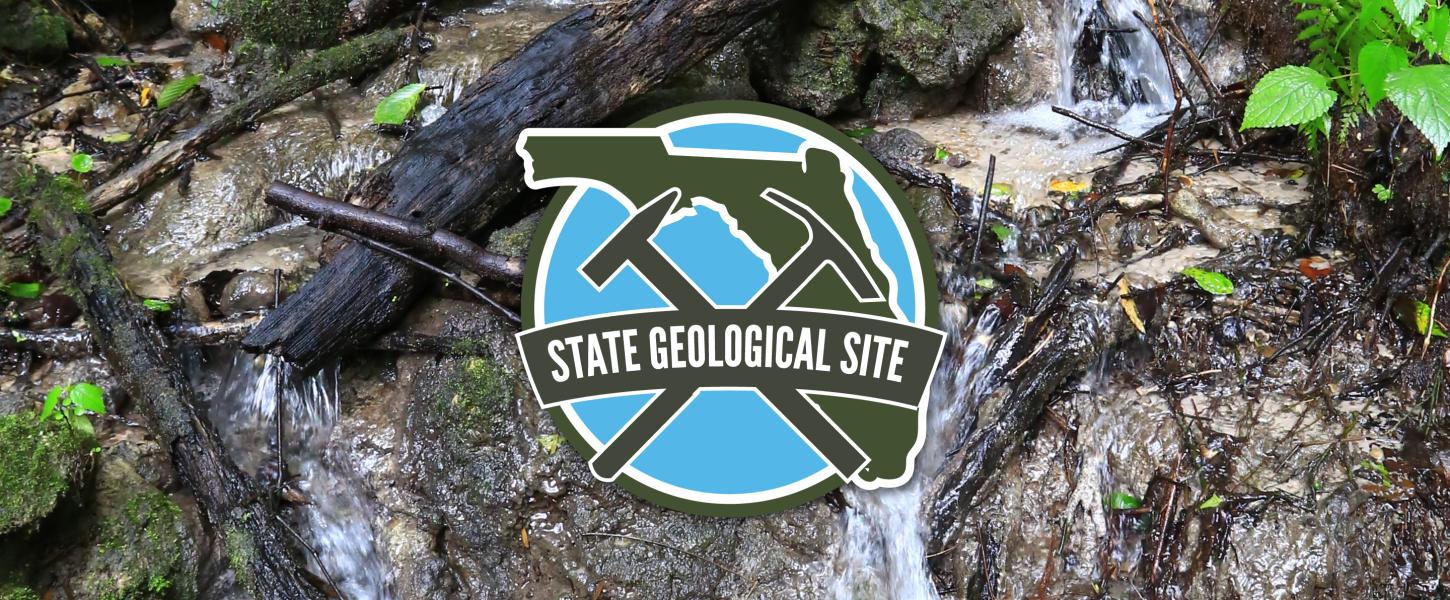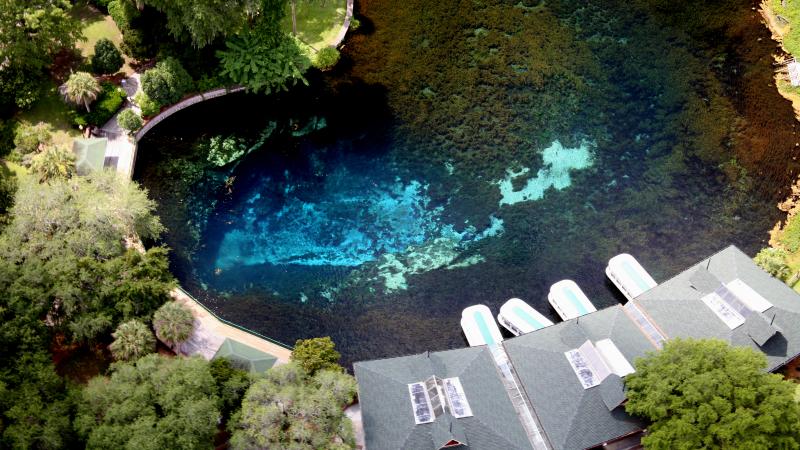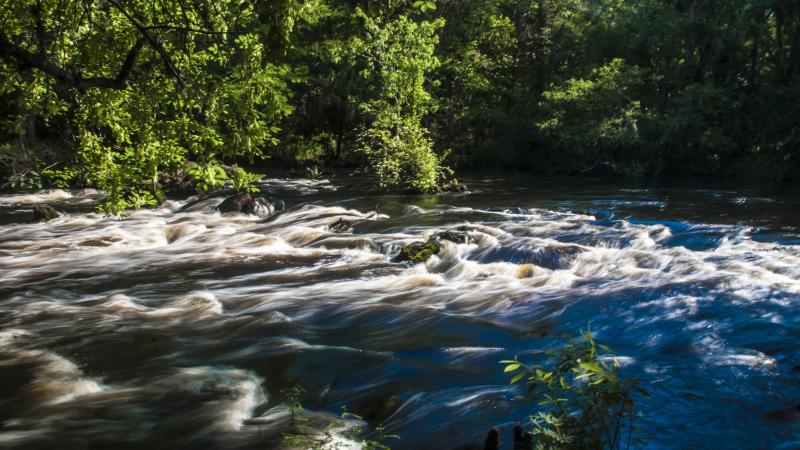
Geology of Devil's Millhopper

Devil’s Millhopper is a large, deep, cover-collapse sinkhole. Sinkholes form when limestone is slowly dissolved by acidic groundwater over geologic time. This process of dissolution can create large cavities in limestone.
A sinkhole forms when the roof of a cavity in the limestone collapses and creates a depression at the land surface. Sinkholes and other landforms that develop in areas where limestone is near the surface are called karst features.

Although sinkholes are common in Florida, Devil’s Millhopper is unique because it is one of the few places in Florida where more than 100 feet of geologic strata (rock layers) are exposed. The park is also unique because it is an important and beautiful example of how ecosystems (flora and fauna) develop in response to geological features.
The rocks exposed in the walls of Devil’s Millhopper are older the farther you go. A thin layer of soil and quartz sand occurs at the top of the sinkhole, overlying the rocks and sediments of the Hawthorn Group. The outcrop of this geological unit in Devil’s Millhopper is composed of dolostone, phosphatic sands and clay that were deposited during the Miocene Epoch between 5.3 and 23 million years ago.
The Hawthorn Group is underlain by upper Eocene Ocala Limestone, which can be seen in the deepest part of the sink. The Ocala Limestone was deposited in a warm, shallow marine environment more than 34 million years ago. The large cavity that is responsible for the formation of Devil’s Millhopper was dissolved out of the Ocala Limestone.
Fossils are commonly seen in the walls and small creeks that flow into the sink. Shark teeth and fossil remains of marine organisms found at Devil’s Millhopper help geologists understand how these geologic units were formed and how old they are. The clayey sediments of the Hawthorn Group can provide a seal (called an aquiclude) over the highly porous and permeable rocks within the Eocene Ocala Limestone, which comprises the Floridan aquifer system in the region.
The clay-rich layers serve an important role in the protection of groundwater quality in the underlying aquifer, which is a source of drinking water for millions of Floridians.


